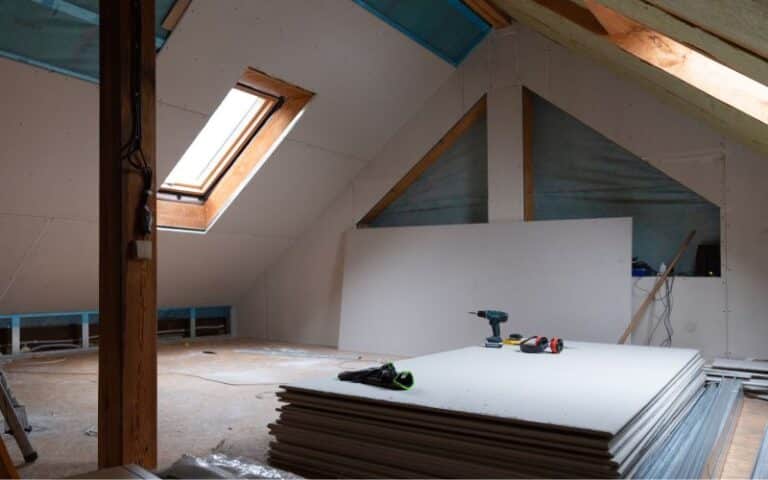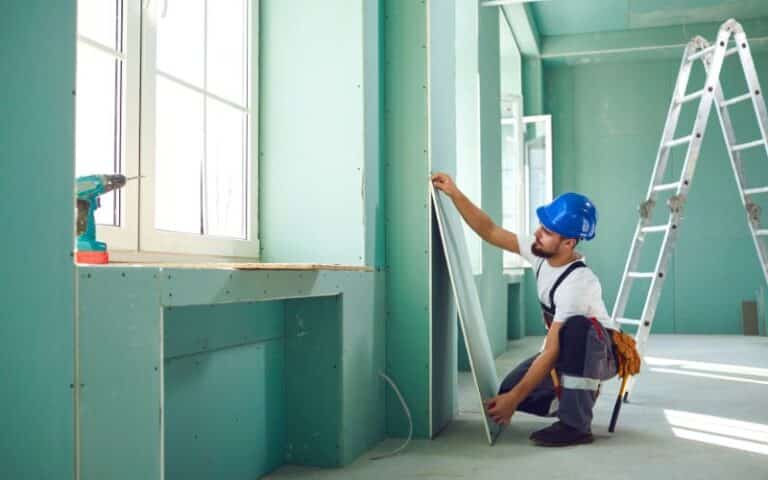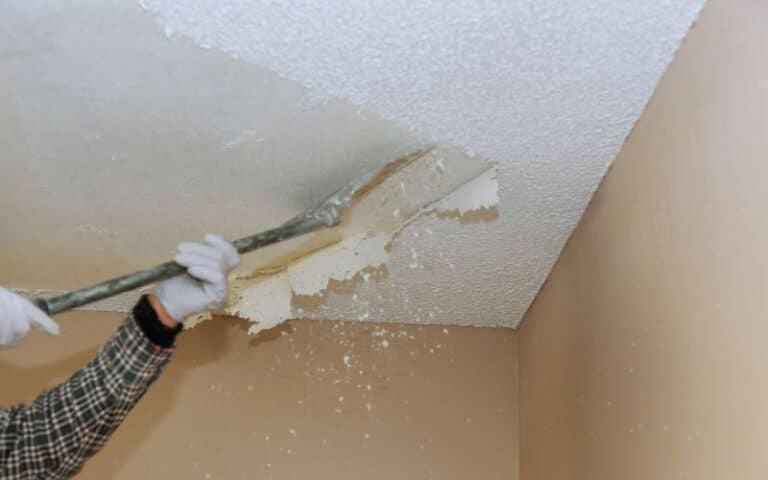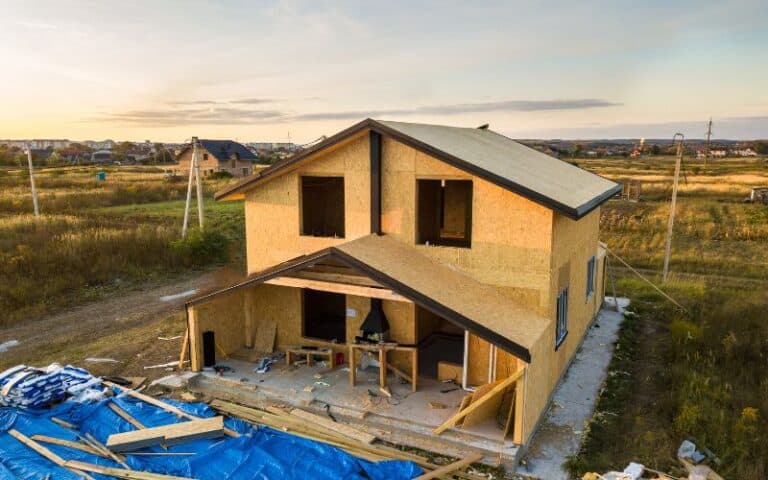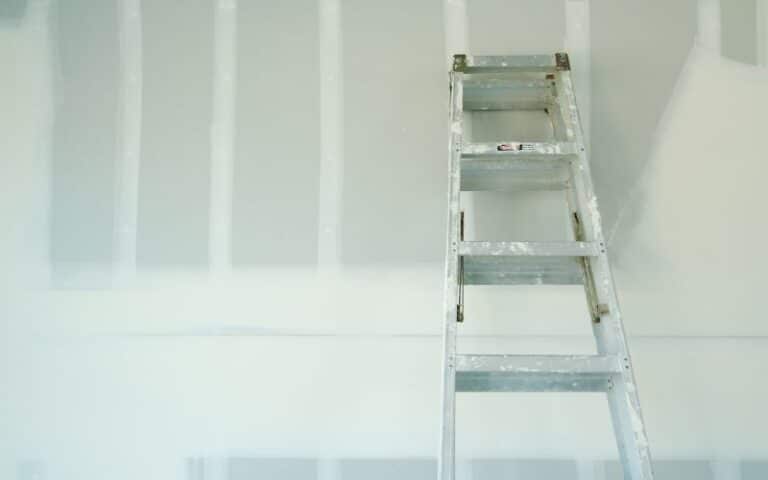Choosing suitable materials can make all the difference when building or renovating a space.
One material that often comes up in discussions of construction is drywall. One of the most critical decisions when installing drywall is selecting the appropriate thickness for the job.
While 1/2 inch drywall is the most commonly used thickness, there are situations where 1/4 inch drywall may be the better choice.
1/4-inch drywall is a thinner and more flexible type of drywall that is more common in curved walls, arches, and other areas that require flexibility. It is also commonly used as a backing for tiles in bathrooms and kitchens. However, it is unsuitable for areas with high moisture levels or where greater durability is needed.
This article will explore when to use 1/4 drywall and why it might be the right choice for your next project. You will also learn to select the right drywall size for your project.
Ready for a Drywall Quiz?
When Do I Use 1/4 Inch Drywall?
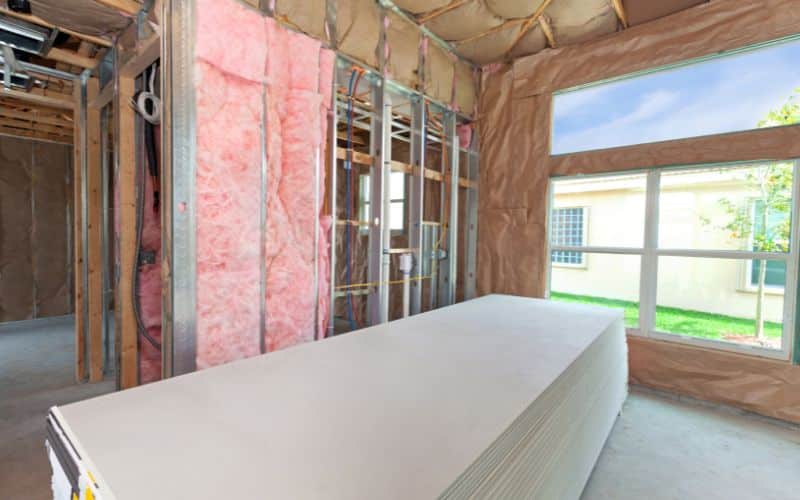
You can typically use 1/4 inch drywall for curved walls or ceilings or as a covering for existing surfaces such as paneling or plaster.
You can also use it as a backing for tiles or other wall coverings. 1/4-inch or thin drywall is popular for specific applications requiring a thinner wall.
Here are some situations where you might want to use 1/4-inch drywall:
#1. Renovations
If you renovate an older home or a building with plaster walls, 1/4-inch drywall is an excellent option.
Thin drywall is easier to work with and is more flexible than thicker drywall, making it ideal for covering uneven walls or ceilings.
#2. Ceiling Repair
If your ceiling has minor damage or needs a new surface, 1/4 inch drywall can be an affordable and easy-to-install option.
Thin drywall is lightweight, which makes it easier to install overhead. It can also be attached directly to the existing ceiling without removing the old material.
#3. Curved Walls
1/4-inch drywall is an excellent choice for creating curved walls or arches. It can be easily bent and molded to fit the desired shape without breaking or cracking.
#4. Soundproofing
You can use thin drywall as an additional layer of soundproofing in rooms that require extra privacy, such as home theaters or music studios.
You can also use multiple layers of 1/4-inch drywall and soundproofing insulation to create a sound barrier.
#5. Backing for Tile
One can also apply 1/4-inch drywall as a backing material for tile installations in areas where thicker drywall would not fit, such as tight spaces.
While 1/4-inch drywall has advantages, there are also some disadvantages.
Thin drywall is not as strong as thicker drywall, which means it can be more prone to damage from impacts or wear and tear.
It is also not recommended for high-traffic areas or rooms that require extra durabilities, such as garages or workshops.
Here is a table showing the advantages and disadvantages of using 1/4-inch drywall.
| Advantages | Disadvantages |
|---|---|
| It is thinner and lighter. | It offers less sound insulation and fire resistance. |
| It creates a smooth surface for painting or wallpapering. | It is more prone to dents and damage. |
| It is suitable as a backing for tiles in bathroom or kitchen areas. | It is not recommended for structural applications. |
| You can use it to cover existing walls or ceilings. | It requires additional care when cutting and hanging due to its thinness. |
Is 1/4 Inch Drywall Ok for Walls?
Using 1/4 inch drywall for walls is not advisable, as it needs to be structurally strong enough to provide adequate support.
1/4-inch drywall is standard in curved walls, arches, and other specialized applications requiring flexibility.
Generally, 1/2 inch or 5/8 inch drywall is the standard for walls, providing better durability and support.
Thicker drywall is also more effective in blocking sound and improving fire resistance. If you want a smoother finish on your walls, opt for a thinner drywall, such as 1/2 inch.
Using 1/4 inch drywall on walls may result in several issues, such as sagging, cracking, and breaking.
It may also be unable to withstand the weight of wall-mounted items like shelves or cabinets.
In addition, using 1/4 inch drywall may not meet building codes and regulations, which require a certain thickness and drywall type for specific applications.
When selecting the appropriate thickness of drywall for your project, it is essential to consult with a professional.
This consultation would ensure you meet safety standards and achieve the desired outcome.
Is 1/4 Inch Drywall Ok for Ceilings?
Regarding ceiling applications, there may be better options than 1/4-inch drywall. While you can use it for ceilings, there are a few factors to consider before deciding to use it.
One of the main concerns with using 1/4 inch drywall for ceilings is that it is less durable than thicker drywall.
The thinner material is more prone to cracking and sagging, especially if there is any weight on the ceiling, such as from lighting fixtures.
This weight can lead to unsightly and potentially hazardous conditions over time. Another consideration is the sound and fire resistance you would require for the space.
Thinner drywall provides less sound insulation and fire protection than thicker drywall options.
Therefore, there are situations where 1/4 inch drywall may be a viable option for ceilings.
For example, it may be suitable for covering existing ceiling surfaces or areas where weight is not a concern, such as in a closet.
Ultimately, the decision to use 1/4 inch drywall for ceilings depends on the specific application and requirements of the space.
It is important to consult a professional contractor to determine the most appropriate drywall thickness for the project to ensure a durable outcome.
How Do I Know the Correct Drywall Size to Use?
The choice of thickness depends on varying factors like the intended use and your local building codes.
Choosing the correct drywall size for your project is essential to ensure that your walls and ceilings are structurally sound and meet building code requirements.
The most common sizes for drywall are 1/2 inch, 5/8 inch, and 1/4 inch. Drywall comes in different sizes and thicknesses, and each size has a specific use.
Here are different drywall sizes and their uses:
#1. 1/4 inch Drywall
It is the thinnest size available and is used mainly for covering existing walls to create a smooth surface for painting. You can also use it as a backing for tiles in bathroom or kitchen areas.
#2. 3/8 inch Drywall
3/8-inch drywall is slightly thicker than 1/4-inch drywall and is standard for curved walls or ceilings. You can also use it as a backing for veneers and paneling.
#3. 1/2 inch Drywall
1/2-inch drywall is the most commonly used for walls and ceilings. It is suitable for most applications, including residential and commercial construction.
It is also ideal for fire-rated walls and ceilings.
#4. 5/8 inch Drywall
It is thicker and heavier than 1/2 inch drywall and is ideal for applications requiring additional soundproofing or fire resistance.
It is suitable for commercial buildings, apartments, and multi-family dwellings.
#5. 3/4 inch Drywall
It is the thickest size available and is ideal for specific applications such as soundproofing, impact resistance, and fire resistance. It is ideal for music studios, theaters, and sports facilities.
Factors to Consider When Selecting Drywall Size
Selecting the appropriate drywall size is essential for achieving a successful construction project.
Each size has specific uses, and selecting the right size for the application is important to ensure the desired outcome.
Here are some factors to consider when determining the appropriate drywall size for your project:
#1. Ceiling Height
For short ceilings that are 8 feet or less, 1/2 inch drywall is usually sufficient. However, 5/8 inch drywall is better for taller ceilings to provide additional strength and stability.
#2. Wall Framing
The wall framing spacing can also impact the drywall size you need. If the framing has a spacing of 16 inches on the center, 1/2 inch drywall is appropriate.
For frame spacing of 24 inches on the center, 5/8 inch drywall is ideal for providing adequate support.
#3. Fire Rating
Certain rooms in a home or building may require fire-rated drywall to meet building code requirements.
The appropriate drywall thickness will depend on the fire rating needed.
#4. Soundproofing
If soundproofing is a concern, thicker drywall can help reduce sound transmission. 5/8 inch drywall is generally considered more effective at soundproofing than 1/2 inch drywall.
#5. Moisture Resistance
Moisture-resistant drywall is suitable for moisture-prone areas, such as bathrooms and kitchens.
This type of drywall is typically 1/2 inch thick and has a unique water-resistant core.
By considering these factors, you can ensure that you select the appropriate drywall thickness to meet the structural and code requirements for your project.

